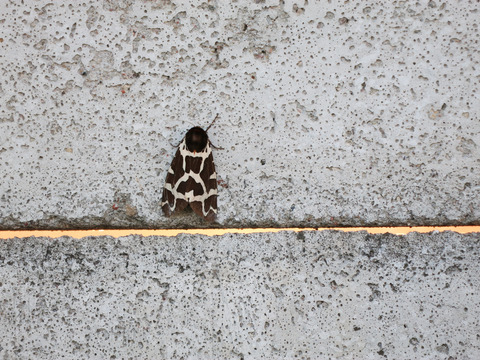Intelligent insect counter opens new opportunities for nature monitoring
Engineers and biologists from Aarhus University have developed an intelligent light trap that can count insects and determine their species as they fly past. This could significantly boost nature monitoring.

3,938 moths are part of a major insect study based on artificial intelligence, and researchers from Aarhus University have just published their results in the scientific journal Sensors.
https://www.mdpi.com/1424-8220/21/2/343
They have developed a counting machine that uses ultraviolet light to attract insects and register them with image recognition. The invention may have a decisive impact on research into climate change and biodiversity.
"If we can monitor the development of moth populations, we can gain new knowledge about how climate change affects our nature. Our technology takes an important step towards automating the very extensive work entailed in counting insects," says Kim Bjerge, associate professor at the Department of Electrical and Computer Engineering at Aarhus University.
Moths are some of our most important markers for climate change, and they are important for global biodiversity. For this reason, biologists are currently spending thousands of hours manually counting moths to monitor developments in the population.
A moth is not just a moth
The challenge is that a moth is not just a moth. There are more than 2,400 different species in Denmark alone, which makes counting and species determination a difficult and time-consuming task.
Today, we catch moths in light traps with a special type of poison. Then we take the dead insects to the laboratory and study them one by one under a microscope.
"Determining the species of moths is a highly specialised task. Our machine can replace much of the manual work, so we can do much larger studies than is possible today. We also avoid having to kill the insects," says Kim Bjerge.
The machine registers the flying insects with a camera which, by means of an algorithm, not only counts the insects, but also determines the species in an instant.
It sounds simple, but there is a lot of interdisciplinary research work behind the insect counter and the artificial intelligence, says Kim Bjerge.
"The biggest challenge has been to train the neural network to recognise a single moth out of several thousand different species and to ensure that it’s not counted more than once if it flies past again. Of course, it’s absolutely crucial that the technology can be used to monitor the populations of individual species," he says.
The researchers have trained the algorithm in the insect counters with images of moths that have already been species-determined by entomologists.
Intelligent nature monitoring
The intelligent insect counter could pave the way for a completely new form of nature monitoring. Therefore, the researchers in Aarhus are very excited that a large number of international research groups have already shown an interest in implementing the technology as part of their national biodiversity initiatives.
"There are major perspectives in using artificial intelligence to monitor insects. We can study the species without killing one single insect, while at the same time gaining more precise knowledge about their habitats, population status and level of activity from day to day," says Toke Thomas Høye, senior researcher from the Department of Bioscience.
He is the ideas man behind the counter and he will use it in his own research work to monitor how quickly different species of moth are attracted by nature restoration projects.
"We hope that the technology will make it possible for us to monitor moths more systematically. This will help us discover whether some species are disappearing. Moths constitute an important element in the Earth's ecosystems. They perform important functions such as pollination, and they’re generally good indicators of the state of nature," he says.
Contact
Kim Bjerge, lektor, Institut for Elektro- og Computerteknologi, Aarhus Universitet
Toke Thomas Høye, seniorforsker, Institut for Bioscience, Aarhus Universitet
